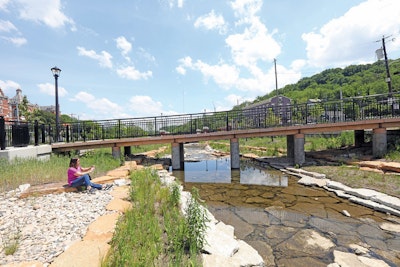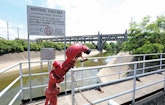
Deb Leonard, communications manager for the Metropolitan Sewer District of Greater Cincinnati, speaks with contractors installing lighting along the east end of the Lick Run Greenway project. ( Photography by Amy E. Voigt)
As the Metropolitan Sewer District of Greater Cincinnati tackles one of the largest public works projects in city history, primarily aimed at reducing combined sewer overflows into local waterways, it’s taking an unconventional approach: opting for “green” solutions whenever...








